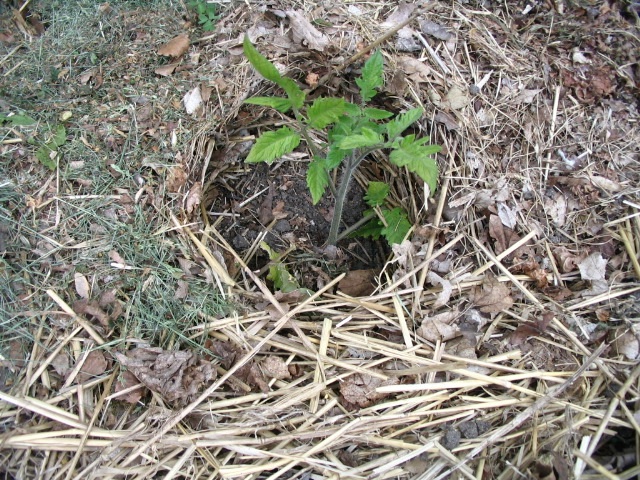As organic gardeners we are continually working towards improving the health of our soils structure and fertility. Almost all soil types can be improved by adding organic matter. Anything with animal or plant origins such as manure, compost, seaweed or straw can be added as a mulch or dug into the soil to decompose and add humus. A few tips are:
Composting
Composting
 Create a space for a compost heap or bins which can be covered with black plastic and marvel at how quickly a large pile will decompose into a small pile in the Mediterranean heat. Compost can be ready in a period of 3 to 6 months and due to the high temperatures generated most weed roots, seeds and diseases are killed. Almost any organic matter can be added but avoid meat or bones which may attract rodents or snakes. Also avoid adding diseased vegetables with blight for example, as these are, along with any perennial weeds, best dried in the sun and burnt. A compost pile should be turned weekly to ensure different materials are mixed together and will neither smell or attract flies.
Create a space for a compost heap or bins which can be covered with black plastic and marvel at how quickly a large pile will decompose into a small pile in the Mediterranean heat. Compost can be ready in a period of 3 to 6 months and due to the high temperatures generated most weed roots, seeds and diseases are killed. Almost any organic matter can be added but avoid meat or bones which may attract rodents or snakes. Also avoid adding diseased vegetables with blight for example, as these are, along with any perennial weeds, best dried in the sun and burnt. A compost pile should be turned weekly to ensure different materials are mixed together and will neither smell or attract flies.Comfrey
I have grown and used comfrey for many years in the UK and it grows happily in the Mediterranean. Plant it in the autumn in fertilised soil to about 80cm apart. My comfrey patch has survived its first scorching Cyprus summer. The plant is a hardy perennial plant which provides a valuable source of manure and liquid fertiliser. I would recommend using Bocking 14, a Russian comfrey, which is a deep rooting plant which, through use of its leaves, provides potash, nitrogen and phosphate. As an organic gardener this plant is extremely useful and can be spread, once established, by annual division.
Once established leaves can be harvested 3 to 4 times a year for use as: a mulch, to place in planting holes for potatoes or tomatoes and can also be added to your compost heap to increase bacterial activity and decomposition. Leaves can also be submerged in water, by weighting, in a sealed container, for example a large barrel, and after several months the smelly juice can be diluted with 10:1 parts of water for use a liquid fertiliser. A liquid fertiliser which is rich in potassium, potash, nitrogen and phosphorous but must be used within six months.
Nettles
 Collect nettles, wearing gloves, from wild areas where no chemical spraying has taken place. Crush or shred the leaves for use as a mulch or use to make a liquid fertiliser by the same method as used for comfrey. The liquid is ready in 20-30 days and can be diluted with 10:1 parts of water and is rich in nitrogen. Nettles may also be combined with comfrey liquid before dilution to produce a beneficial feed. Any liquid nettle leftover at the end of the season can be added to your compost as an activator.
Collect nettles, wearing gloves, from wild areas where no chemical spraying has taken place. Crush or shred the leaves for use as a mulch or use to make a liquid fertiliser by the same method as used for comfrey. The liquid is ready in 20-30 days and can be diluted with 10:1 parts of water and is rich in nitrogen. Nettles may also be combined with comfrey liquid before dilution to produce a beneficial feed. Any liquid nettle leftover at the end of the season can be added to your compost as an activator.Seaweed
Can be used as a mulch or turned into a liquid feed by submerging in water for 45-60 days. The liquid is rich in potassium and many trace elements and can be used after being diluted with 1:1 parts of water.
Ash
Ash from garden bonfires, wood burning stoves or fireplaces has some fertiliser value with about 10% potash, 1% phosphate and traces of iron, copper and zinc. The largest component of wood ash is 25% calcium carbonate which is a common liming material and increases soil alkalinity. Our soil has a pH of 5.5 so benefits from adding wood ash to raise the alkalinity but do do add wood ash to areas in which acid loving plants are growing.
Mulching
 Mulching is widely used by organic gardeners and can be undertaken throughout the year. A mulch is simply an organic layer placed around plants and can comprise of compost, straw or leaves. The benefits of mulching are: it helps keep weeds at bay if thickly applied; it keeps the soil cooler on very hot days; adds nutrients to your soil and conserves moisture by reducing rapid drying. Apply mulching material which is partly decayed to avoid soil nitrogen loss during decomposition.
Mulching is widely used by organic gardeners and can be undertaken throughout the year. A mulch is simply an organic layer placed around plants and can comprise of compost, straw or leaves. The benefits of mulching are: it helps keep weeds at bay if thickly applied; it keeps the soil cooler on very hot days; adds nutrients to your soil and conserves moisture by reducing rapid drying. Apply mulching material which is partly decayed to avoid soil nitrogen loss during decomposition.
No comments:
Post a Comment